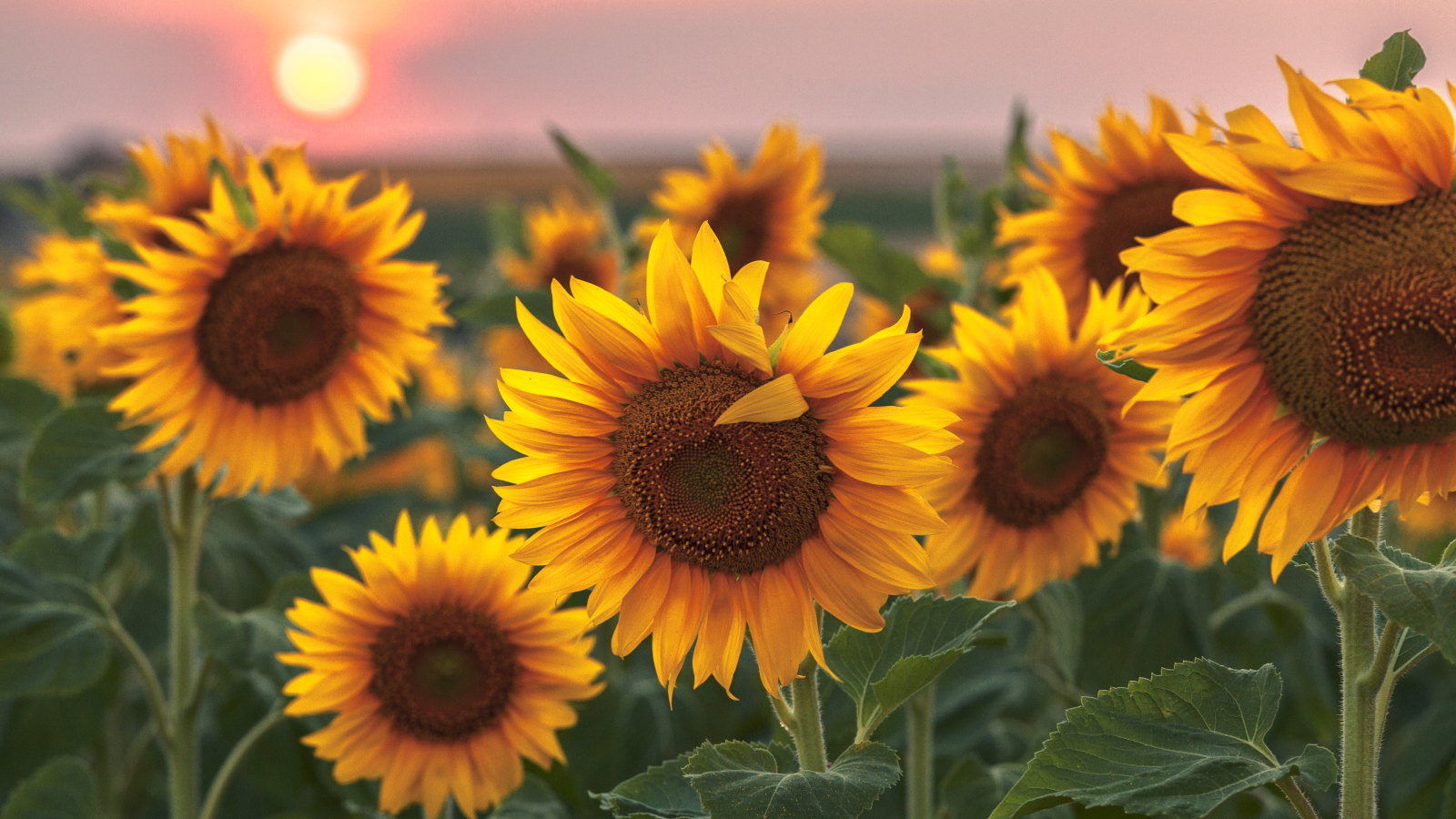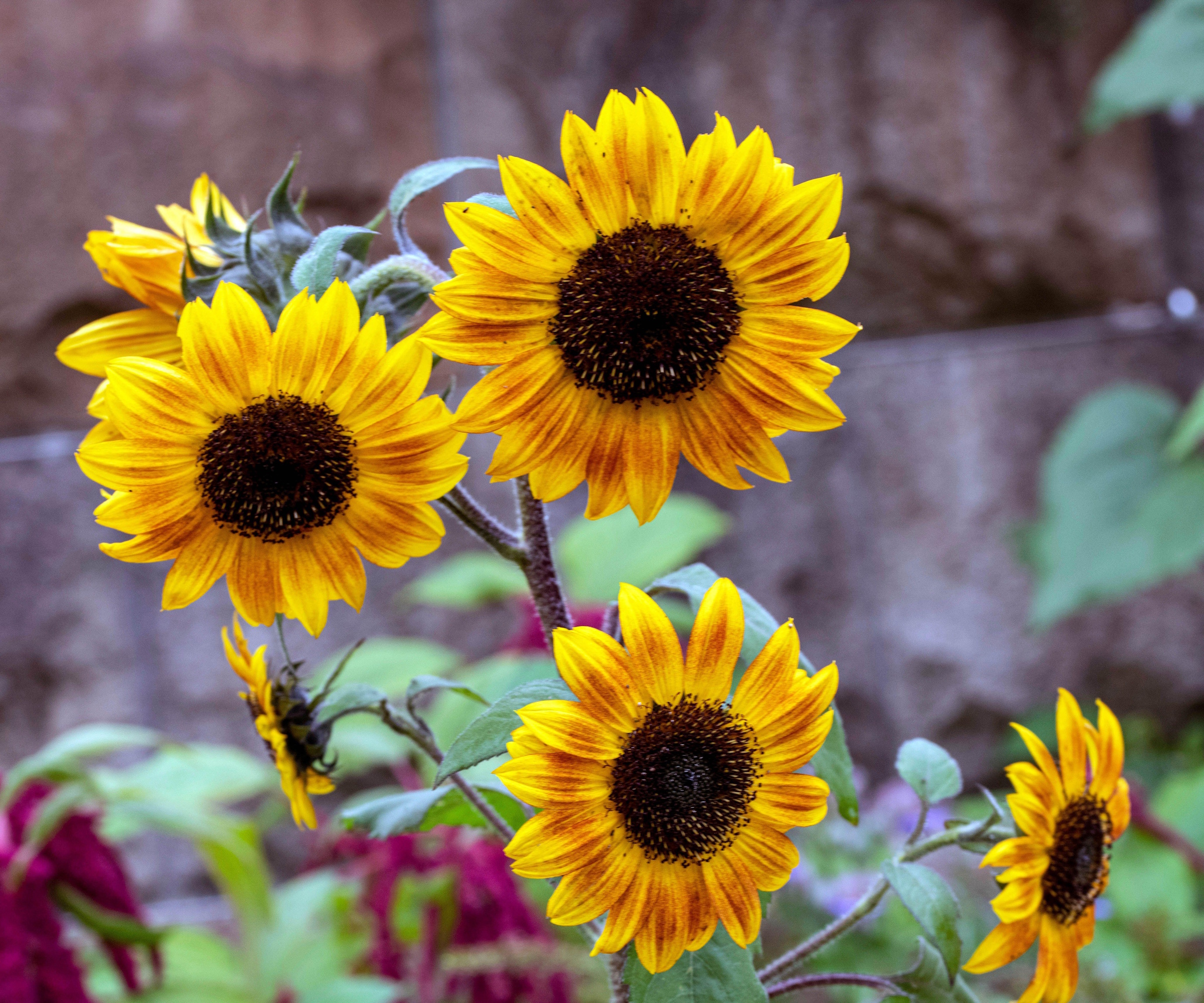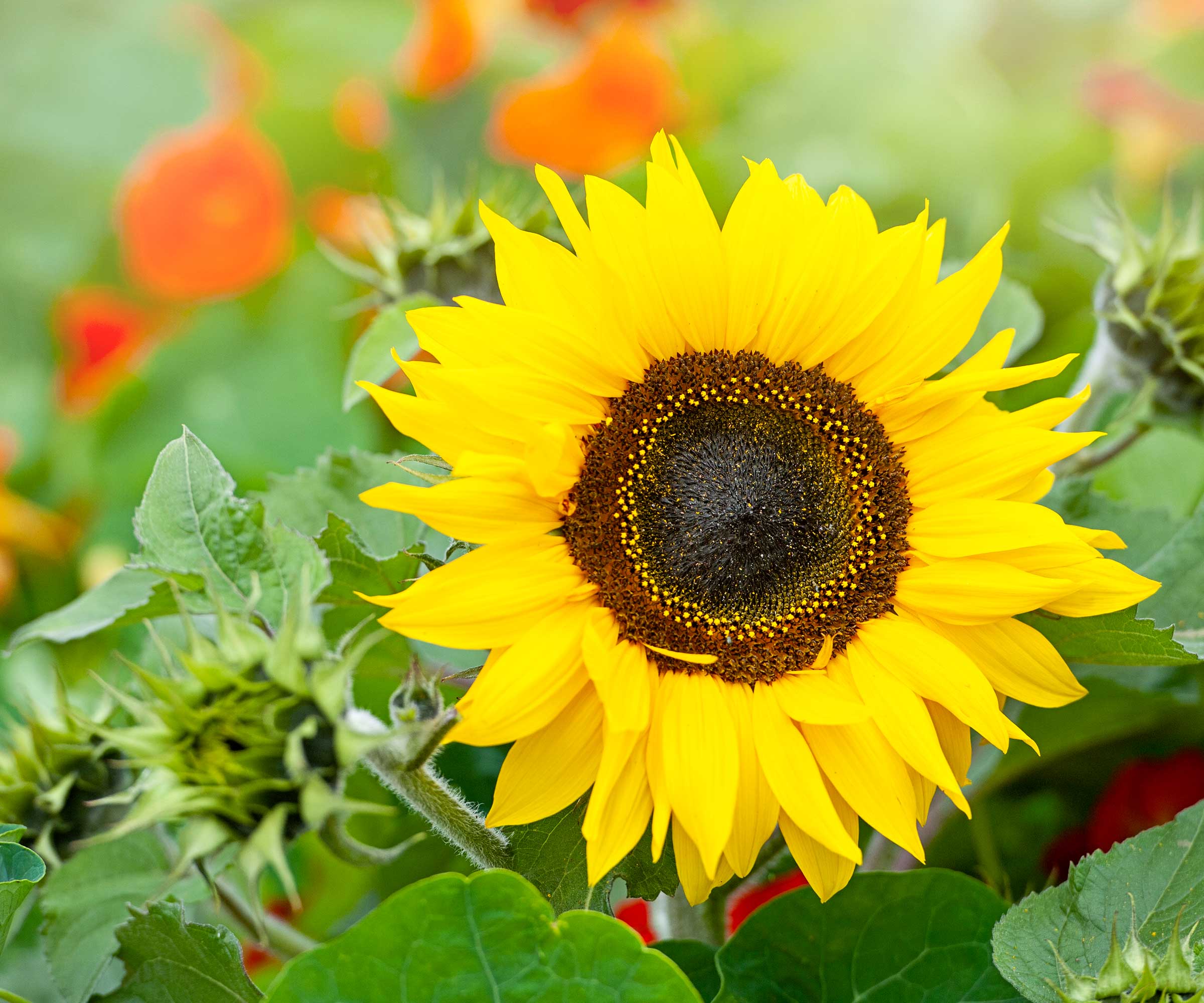
Sunflowers are universally popular, and the cheery plants are guaranteed to bring a smile to your face. If you thought you couldn’t grow them due to a lack of garden, then think again, as you can grow sunflowers in pots on a deck, patio, porch, or balcony.
If you want to grow sunflowers in pots, there are some important factors you need to get right. And these can make the difference between a stunning display and disappointment. These include selecting the right sunflower variety, using a large pot, and placing it in a sunny location.
This guide looks in-depth at how to grow sunflowers in pots, with expert tips on those key points outlined above, and more. Follow this advice for thriving sunflowers and fantastic, colorful container displays.

Can you grow sunflowers in pots?
When you picture giant sunflowers reaching high up towards the summer sky, it leads you to doubt whether it is possible to grow sunflowers in pots successfully.
However, there are many sunflower varieties, ranging in size and color, which make it feasible to grow sunflowers in pots in small spaces and urban gardens. It means that, even if you do not have a garden, you can grow these heart-warming, cheery plants.
'Sunflowers are a great option for pots as long as you follow some basic rules regarding size, varieties, and the correct pot and location,' says Ondrea Kidd, lead floral designer and founder of Sowing Joy Farm in Post Falls, ID.
'Adding sunflowers to your porch pots is a great way to bring their iconic joyfulness to locations that they otherwise wouldn’t get to be.'
To help you succeed growing sunflowers in pots, here are some tips on those rules that Ondrea mentions above, plus a few bits of extra maintenance advice from the experts.
How to grow sunflowers in pots – 5 rules to follow
Pick the right variety

If you want to grow sunflowers in pots, the best types to pick are the dwarfing varieties. These reach only a few feet in height yet put on great flowering displays, plus there are lots of great dwarf sunflowers for pots to discover in many forms and colors.
'I would stay away from any of the huge varieties unless you can tie them to a large structure,' recommends Ondrea Kidd. 'Sunflowers are very top-heavy and will fall if not properly tied, and some of the large varieties can get to over 12 feet tall.'
Ondrea handpicks 'Teddy Bear' and 'Sun Spot' as two non-branching, or single-stemmed, sunflowers that work well in pots.
Her choices are also favoured by Michael Clarke, horticulturist and founder of Yardwork, who says: 'Teddy Bear is great for containers, growing 2–3 ft tall, with fluffy double blooms. Sunspot is another fantastic compact variety that grows 2 ft tall, with a large single bloom.'
Branching sunflowers produce more flower heads on larger plants, but there are still varieties suitable for containers. The likes of 'Autumn Beauty', 'Sonja', and 'Firecracker' are all branching sunflowers that will thrive in pots.
Choose the right pot for the sunflower
Any container needs to be large enough to accommodate the size of the sunflower it is to contain. Sunflowers have long taproots and extensive root systems to be able to support their tall stems, and there needs to be room in the pot to house these.
The size of the container will depend on the variety and size of the sunflower, with large varieties needing bigger containers. Providing enough space is also imperative if you want to plant more than one sunflower per container.
'For many dwarf (1-2 feet tall) varieties, you can use any pot over 12”', recommends Ondrea.
She adds: 'The larger the sunflower variety, the larger the pot needs to be, both for stability and to enable enough room for their roots. If growing any sunflower over 24” in height, I would suggest a pot of 18” or more.'
For taller sunflowers, there often needs to be enough space for stakes to secure the plant, too, unless you are growing them in a planter box with a trellis, and the pot must be wide enough to prevent the plant from toppling in strong winds.
Any container needs to have holes in the bottom for drainage, to prevent root rot from waterlogging, and be filled with a quality potting mix, such as this organic potting mix available at Walmart.
This 15 x 15-inch contemporary-style planter is made from magnesium oxide and features a distressed finish and ribbed design. It also has a drainage hole and plug.
This 17.2 x 17.5-inch lightweight modern round planter is ideal for any deck, patio, or balcony. With a clean, minimalist silhouette, your sunflowers will stand out.
These large 18" H x 19" W x 19" D planters are made of high-quality double-walled resin and have a built-in self-watering sub-irrigation system.
Give the sunflowers enough sun

Sunflowers, as the name might give away, love the sun and want to grow in a full sun position to perform and flower at their best. Getting the location right is key, as sunflowers can become misshapen or topple if they desperately spread in search of the sun.
'Growing in a pot means that you can easily provide sunflowers with what they love the most is full sun - which is why they are often described as 'sun worshippers',' says Lucie Bradley, gardening expert from Easy Garden Irrigation.
'Containers can be situated in the perfect spot to get the 6 to 8 hours of direct sunlight which sunflowers thrive under. Containers are also movable, so you can reposition them to suit the season, following the sun to ensure your sunflowers produce vibrant blooms.'
Water sunflowers in pots regularly
Plants in container gardens always need more watering than those growing in the ground, and sunflowers are going to require regular watering during the season.
However, overwatering runs the risk of root rot, so, along with having drainage holes in the pots, you should check the moisture content before watering. Ahead of watering plants in containers, check the moisture levels a few inches under the surface with your fingers.
'Sunflowers in pots should be watered when the top 1–2 inches of soil feels dry, typically, 2–3 times per week in warm weather,' advises Michael Clarke. 'It's best to water deeply so the roots grow downward and make sure the water can fully drain out of the pot to avoid soggy soil and prevent root rot.'
Check plants every few days, increasing to daily or even twice a day during very hot spells, and be sure to water the soil rather than the stem or leaves.
Fertilize sunflowers in pots often

Sunflowers are heavy feeders that need lots of nutrients, and they will require supplementary feeding during the growing season when planted in containers.
Ondrea Kidd claims that plants started in 'good soil' will have enough nutrients for their first four weeks growing in the pot. Then it is down to the gardener to feed plants and give them what they need to develop and flower.
'I suggest a feeding every two weeks. I use a top dressing of worm castings along with a liquid feed of seaweed,' she recommends. Potential options for this regime would be these organic worm castings, available at Amazon, along with this liquid seaweed extract feed from Walmart.
As an alternative, in the absence of worm castings, Michael Clarke recommends a 'balanced fertilizer' with an NPK ratio of 10-10-10 being given to plants 'every 2–3 weeks' after the first four weeks of planting sunflowers in the pot. An example of such a product is this 10-10-10 all-purpose flower and vegetable plant food, available at Amazon.
Always apply any product at the recommended rates, going over this risks overfertilizing plants and doing more harm than good.
Shop sunflower varieties to grow in pots
Teddy Bear seeds to grow 24 - 36" tall sunflowers that produce golden yellow, fully-double pom-pom blooms. An ideal sunflower variety for pots.
Sun Spot is a great alternative to tall sunflowers, as the compact variety grows to 30-36" tall yet produces 10" wide golden-yellow heads.
Tiger Eye Hybrid is a compact branching sunflower variety that reaches 24-30 inches and produces up to eight 5-inch blooms per plant.
FAQs
Can you grow sunflowers in pots indoors?
You can grow sunflowers in pots indoors, but it is important to pick a spot where the plants can get the right levels of sunlight. Sunflowers want 6-8 hours of direct sunlight, so pick a bright south-facing windowsill to give plants the levels they want for flowering. A very compact variety, such as Sunflower ‘Sunray Yellow Hybrid’ at Burpee that grows to just 22 inches tall, is capable of lots of flowers in a small space, provided it gets enough sunlight.
To keep your container-grown sunflowers blooming all summer long, there is one more helpful maintenance tip to remember on top of watering, fertilizing, and supporting plants.
Branching varieties that produce more than one bloom will benefit from a bit of sunflower pruning. If you spent a bit of time deadheading blooms once they look past their best, the plant can focus energy on other flowers rather on going to seed.







